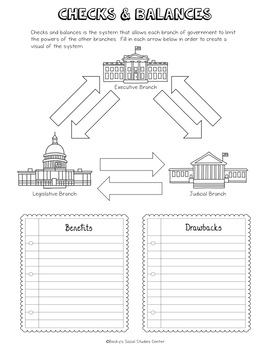3 Branches of Government Graphic Organizers Election 2024 Google Slides™
- PDF
- Google Apps™

Description
This distance learning resource includes digital access via interactive Google Slides™. The eight pages of graphic organizers give students the opportunity to learn about the structure, roles and responsibilities of our government, with a focus on the legislative, executive and judicial branches. Additionally, they'll takes notes on checks and balances that are so important in our government. Also, students will share their opinions of various issues often discussed and debated in government. An answer key is included!
Related Resources:
Presidential Election 2020 Complete Unit
Legislative, Executive & Judicial Branch Primary Source Activities
Create a Visual of the Three Branches of Government
Constitution Task Cards: Three Branches of Government
40+ Activities About the Constitution & Bill of Rights





